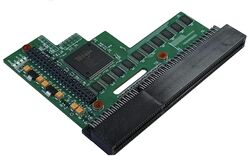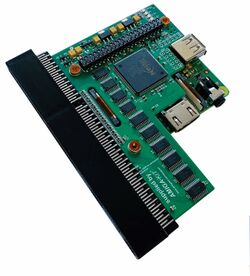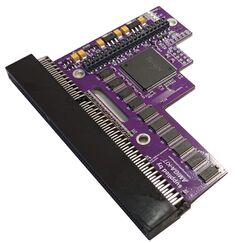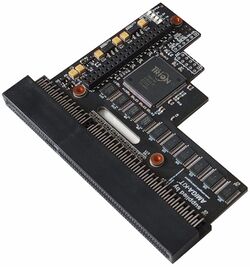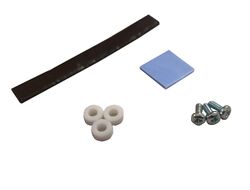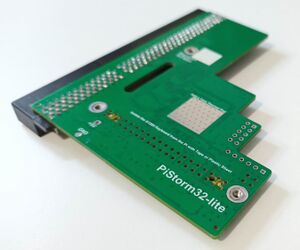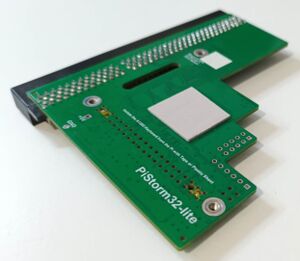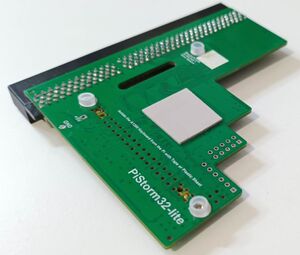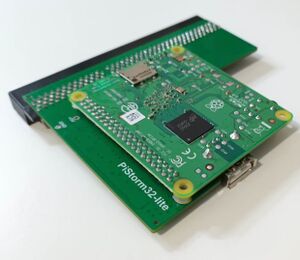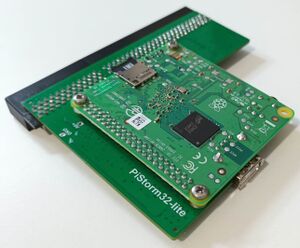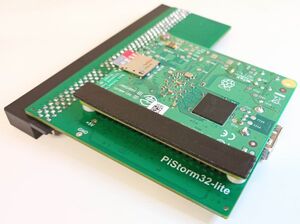Difference between revisions of "Pistorm32-Lite"
| Line 94: | Line 94: | ||
3) Once downloaded, extract contents to the root of the SD card. | 3) Once downloaded, extract contents to the root of the SD card. | ||
| − | 4) Open root of SD card copy across a valid kickstart file across (i.e. Kickstart 3.1) and rename it kick.rom. | + | 4) Open root of SD card copy across a valid kickstart file across (i.e. Kickstart 3.1) and rename it kick.rom. <b>(If you do not wish to use kickstart file, make sure to # out the initfs line. i.e. # initramfs /roms/PS32-Lite_3221.rom, this is done in config file.)</b> |
5) Finally, insert SD card into Raspberry Pi. Once turned on, it should boot to Kickstart 3.1 screen (unless you have an HDD, else it will boot that). You can use official Kickstarts or Custom made roms. | 5) Finally, insert SD card into Raspberry Pi. Once turned on, it should boot to Kickstart 3.1 screen (unless you have an HDD, else it will boot that). You can use official Kickstarts or Custom made roms. | ||
Revision as of 09:53, 8 November 2023
Introduction
The PiStorm32-Lite is an accelerator for the Commodore Amiga 1200 computer. It has been created by Claude Schwarz.
This speeds up the Amiga 1200 by leveraging the Raspberry Pi's computational power. The Raspberry Pi plugs into the PiStorm and emulates the native 680x0 CPU at much higher performance than the original CPU.
The Raspberry Pi is running software emulation of the 680x0 CPU using Emu68 developed by Michal Schulz.
As a community project it is assembled and distributed by well known suppliers such as Amiga Kit.
Compatiblity
To use the PiStorm32-Lite you will require:
- Commodore Amiga 1200 (or Escom Amiga Technologies 1200)
- Raspberry Pi: (Where possible, 2GB Max is recommended as AmigaOS is limited to 2GB Fast RAM)
- Zero 2w
- Model 3 A
- Model 3 A+
- Model 3 B
- Model 3 B+
- Model 4
- CM4 (To use, you need CM4 breakout board for the PiStorm32-Lite board)
- MicroSD card (recommended 32GB)
Hardware Installation
Raspberry Pi Installation
Please follow the following steps for mounting and securing your Raspberry Pi on the PiStorm32-Lite:
IMPORTANT: Covering the exposed GPIO pins on the PiStorm32-Lite board with the insulation strip is critical (see step 6 photograph). This prevents the pins shorting against the metal backplate of the Amiga 1200 keyboard.
Amiga 1200 Installation
1 Power down the Amiga and monitor. Unplug all cables from the Amiga.
2 Anti-statically discharge yourself before handling the device. It is recommended to use an E.S.D. wrist strap for the installation process (such as Amiga Kit product code TLSASW001).
3 Turn over the Amiga and remove the plastic trap door cover by using a small coin/flat blade screw driver to gently lever open the plastic latch.
4 Align the memory expansion's 150-pin expansion connector with the gold contacts on the motherboard and push it on until fully in place. Do not push the expansion onto the motherboard's gold contact at an angle as this could bend or damage the pins in the connector. If the metal upper RF shielding is obstructing the installation of the card, then it may need to be gently bent upwards. It can also be loosened by opening the computer and loosing the securing screw.
5 Replace trap door cover, turn over, connect all cables and power on.
Software Installation and Configuration
There are two ways you can setup software. First being the quick method to test card is working. The second being a more involved process to enable use of extra space on SD card, as Hard Disk Drives.
Quick Method
1) Take your SD card (preferably 32GB) and format it as FAT32.
2) Goto https://github.com/michalsc/Emu68/releases/tag/v1.0-rc.2 and download latest available for PiStorm32-Lite. It will start with Emu68-pistorm32lite-. Current file as of 18-10-23, Emu68-pistorm32lite.zip.
3) Once downloaded, extract contents to the root of the SD card.
4) Open root of SD card copy across a valid kickstart file across (i.e. Kickstart 3.1) and rename it kick.rom. (If you do not wish to use kickstart file, make sure to # out the initfs line. i.e. # initramfs /roms/PS32-Lite_3221.rom, this is done in config file.)
5) Finally, insert SD card into Raspberry Pi. Once turned on, it should boot to Kickstart 3.1 screen (unless you have an HDD, else it will boot that). You can use official Kickstarts or Custom made roms.
- NOTE:- Do not do as config text says, in regards to adding firmware before kick.rom. Doing this causes Lite to load firmware twice and machine will hang on blank screen.
More Involved Method
1) Take your SD card, however this time we are going to clean it and partition it.
2) Open Command Prompt as Administrator, if using Windows (else use what ever partitioning software your happy with).
3) In command prompt type diskpart and press return (enter).
4) In diskpart type list disk and press return (enter). It will list all drives attached to your machine.
NOTE:- DiskPart is a dangerous tool if you select wrong drive, as it will list your boot drives. Make sure you select the correct device.
5) Look at list and select correct drive by size and then type select disk y (y being number of drive listed in list disk) and press return (enter).
6) Once your sure you have correct drive selected (you can check with list disk, it will put and * next to drive selected), type clean and press return (enter). This will completely blank the SD card.
7) Check SD card is still selected, by using list disk command again (you will also notice, free and total space will be same).
8) Now type create partition pri size=512 and press return (enter). This partition will be our PS32-Lite FAT32 software partition. It doesn’t need to be massive, so 512MB should surfice. 9) Next you need to decide on drive sizes for rest of card. As any extra partitions created will be seen as separate drives. So you could create 1 partition using rest of card and then partition that in AmigaOS, like a real HDD. For this guide we will create 3 extra partitions.
10) Now type create partition pri size=512 id=76 and press return (enter). This can be our system drive in AmigaOS.
11) Then type create partition pri size=512 id=76 and press return (enter). This can be our Work drive in AmigaOS.
12) Finally type create partition pri id=76 and press return (enter). Notice we do not specify a size, this will use the rest of the SD card. This can be our Games drive in AmigaOS.
13) Now we need to assign partition 1, so it will mount as a drive in windows. Type select partition 1 and press return (enter). Then type assign and press return (enter). Then type exit and press return (enter).
14) You can now close the command prompt window.
NOTE:- To use partitions we just setup as drive in AmigaOS. You will need to change the HDToolBox tooltype line. Change from SCSI_DEVICE_NAME=scsi.device to SCSI_DEVICE_NAME=brcm-sdhc.device.
***(For Pi4 / CM4), you need to use SCSI_DEVICE_NAME=brcm-emmc.device.***
When you run HDToolBox, ignore the disk marked as 0, as that’s our Pi software partition. Set up disk 1,2 and 3 as you normally would a HDD.
15) Copy PS32-Lite files across as described in Quick Method.
Extra Configuration Information
In the main config.txt, you only need to point it to your kickstart rom file. If you want to use the onboard kickstart simply comment line "initramfs kick.rom" with # at the beginning.
You can also ceate another text file named "cmdline.txt". This file will pass more configuration options.
Some extra commands are;
buptest=512 bupiter=1 <------Test's connection between PI, PS32 and Amiga Chip RAM.
sd.unit0=rw and emmc.unit0=rw <------ Allow write access to the PS32-Lite firmware partition of SD (if you have the correct mount scripts setup in workbench).
sd.clock=100 <------- Allows you to force SD speed, ONLY USE THIS IF YOUR SURE YOUR SD CARD CAN SUPPORT IT.
vbr-move <------ Same as on Amiga workbench.
enable_cache <------ CPU JIT.
All commands, need to be in single line with one space between then, i.e. buptest=512 bupiter=1 sd.unit0=rw sd.clock=100 vbr_move enable_cache
Further commands can be found at https://michalsc.github.io/Emu68/Options.html.
Where to buy
This product can be purchased at the following Amiga Stores
Amiga Kit Amiga Store:
PiStorm32-Lite for Commodore Amiga 1200
Amiga Kit France Amiga Store: PiStorm
Amiga Store: PiStorm32-Lite for Commodore Amiga 1200
Copyright
This document including all images is Copyright 2023 AmigaKit Ltd. No unauthorised duplication or reproduction in any form is permitted.
